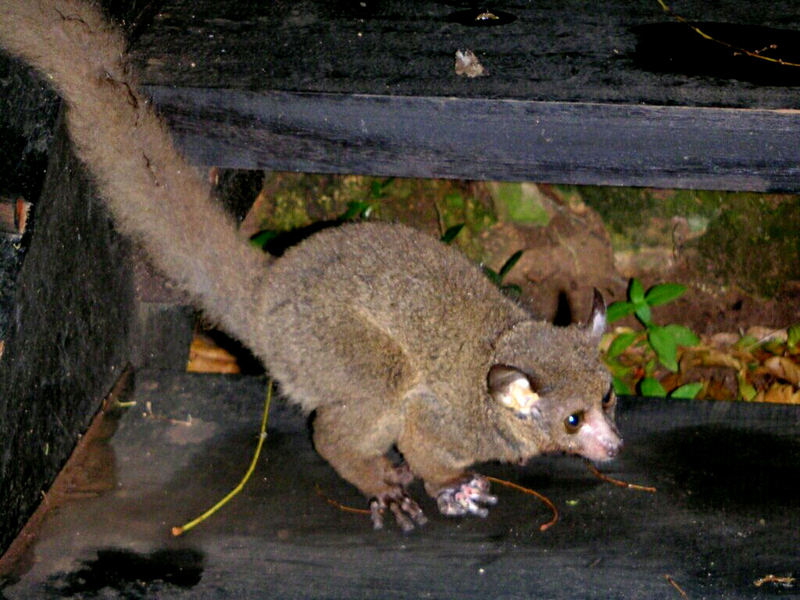|
| Query: large white | Result: 1155th of 2106 | |
Brown Greater Galago (Otolemur crassicaudatus) - Wiki
| Subject: | Brown Greater Galago (Otolemur crassicaudatus) - Wiki
| |

| Resolution: 1024x768
File Size: 168270 Bytes
Upload Date: 2008:01:15 13:21:08
|
Brown Greater Galago
From Wikipedia, the free encyclopedia
Order: Primates
Suborder: Strepsirrhini
Infraorder: Lorisiformes
Family: Galagidae
[Photo] Brown Greater Galago (Otolemur crassicaudatus) at Kenya, August 2004. Photographer: buecherfresser. Source: http://en.wikipedia.org/wiki/Image:Greater_Bush_Baby.jpg | Permission is granted to copy, distribute and/or modify this document under the terms of the GNU Free Documentation License, Version 1.2 or any later version published by the Free Software Foundation; with no Invariant Sections, no Front-Cover Texts, and no Back-Cover Texts. A copy of the license is included in the section entitled "GNU Free Documentation License". |
The Brown Greater Galago (Otolemur crassicaudatus) is a nocturnal primate, the largest in the family of galagos.
Physical characteristics
This species has a rounded head with a short, wide snout, very large ears and relatively small eyes. The thick fur is very variable in color: some have a grayish fur with a white tail tip, others a dark brown fur with a black tip. The lighter colored animals mainly occur in dryer, low-lying areas, while the darker animals live in higher, wetter territories.
The Brown Greater Galago has a head-body length of 26 to 47 cm (32 cm on average), a tail length of 29 to 55 cm, and a weight of 0.5 to 2 kg.
Distribution
It is a common species in Southern and East Africa. The largest populations can be found in Angola, Tanzania and southern Kenya, and the coast of Somalia.
Behavior
The Brown Greater Galago is a nocturnal animal. During the day, it rests in a hollow tree or in dense vegetation. Its diet consists of fruit (like berries, figs), seeds, acacia gum, flowers, insects, slugs, reptiles and small birds.
The species live is small groups in a territory of a few hectares. The territory is marked by urine and a special flavouring that is produced in a gland in the breast.
http://en.wikipedia.org/wiki/Brown_Greater_Galago
| The text in this page is based on the copyrighted Wikipedia article shown in above URL. It is used under the GNU Free Documentation License. You may redistribute it, verbatim or modified, providing that you comply with the terms of the GFDL. |
|
^o^
Animal Pictures Archive for smart phones
^o^
|
|